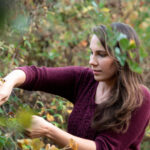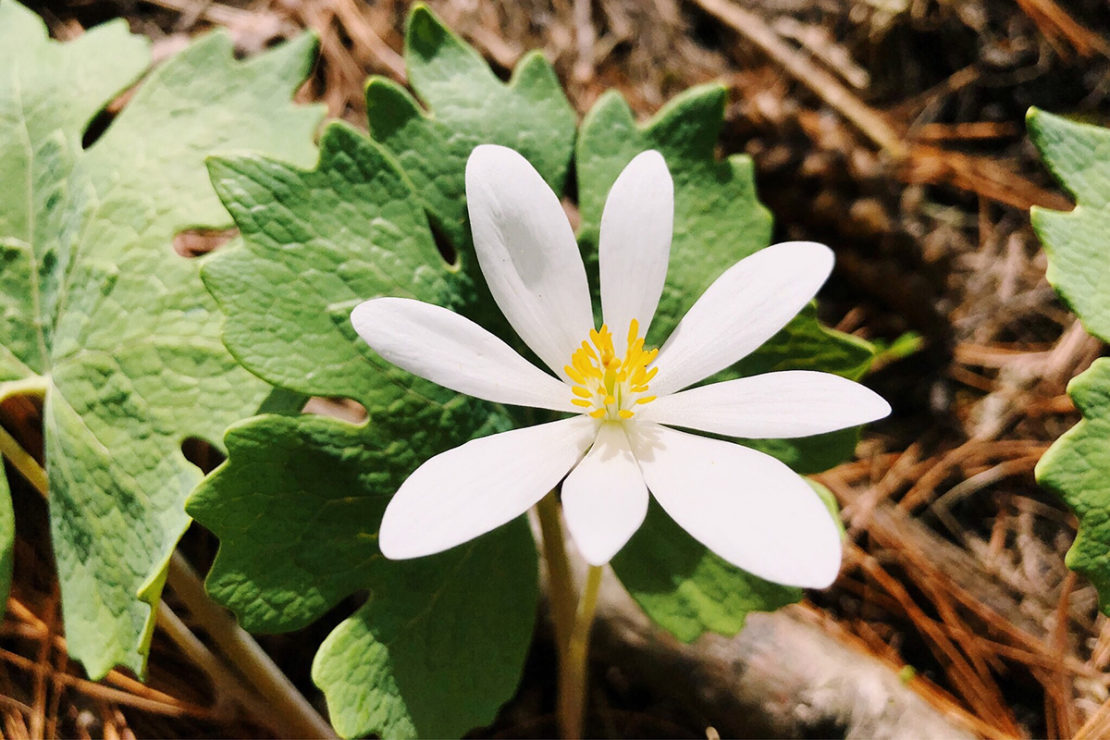
12 At-Risk Plants NOT To Harvest This Year
Late spring and summer are ideal times for harvesting plants. This is because, by this time, most plants have developed to the point where their identifying characteristics are obvious—leaves are often fully grown, flowers have blossomed, and some plants are already forming seeds, each of which makes plant identification easier.
While most in the herbal community encourage the wildcrafting of local plants, this practice isn’t as simple as going out and digging an identified plant out of the ground in order to use it. Just as one herbalist teaches another how to make an infused herbal oil or how to incorporate a specific plant into their practice, teaching others how to harvest plants must be combined with a fair amount of instruction on why one should harvest in the first place, which plants to harvest, when to harvest, and how to do it in a sustainable way. Ethics and sustainability are always in the forefront of an herbalists mind as he or she seeks to gather plants to use.
“If we choose to use plants as our medicine, we then become accountable for the wild gardens, their health and their upkeep.” – Rosemary Gladstar
While there are several important pieces of information that an herbalist would want to pass on to someone new to wildcrafting, one of the most important is teaching about at-risk plants and why we should not harvest them.
This article will explain what at-risk plants are, what our responsibility is concerning these plants, and what we can do to preserve and protect them. We’ll also look at 12 at-risk plants that you should not harvest from the wild.
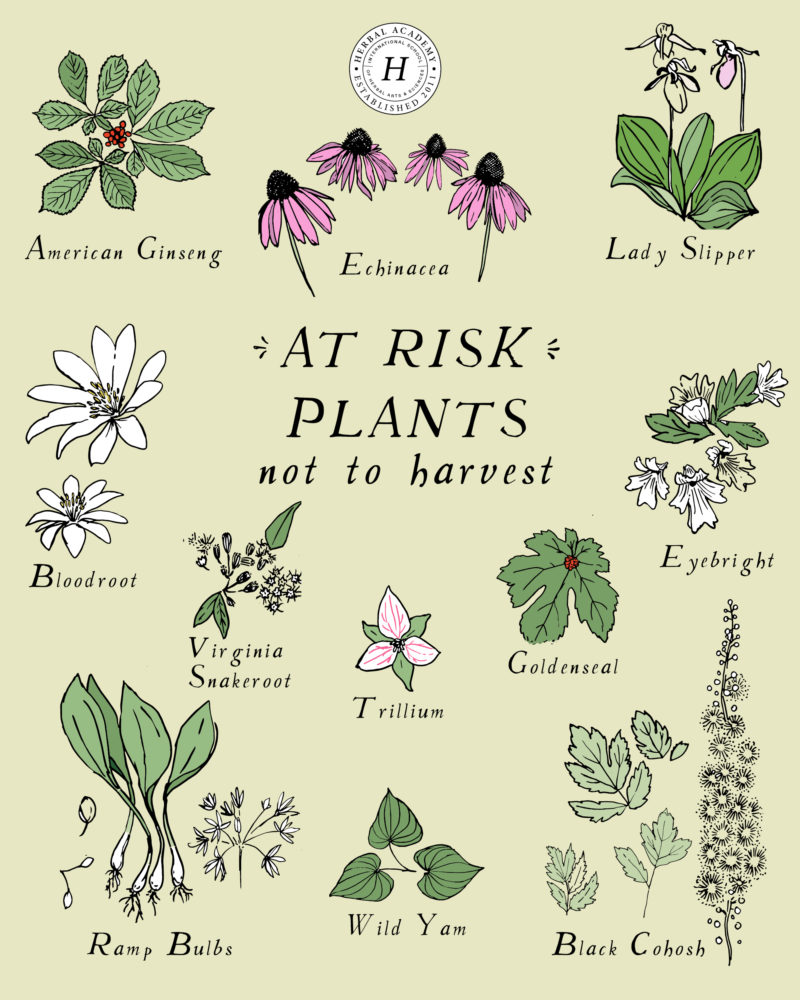
What are “At-Risk” Plants?
At-risk plants are those that are either naturally rare in the environment or those that are becoming rare through human influence.
Just as some plants reproduce and spread quickly and are often termed as “invasive” plants, there are those that are quite the opposite. These plants are naturally rare. This can be due to slow growth habits, habitat incompatibility, population isolation, genetic incompatibility, problems with seed dispersal, loss of pollinators (which can also be caused by human influence), or by competition from or overpopulation of invasive plants, animals, or pests (USDA Forest Service, n.d.a.). Other plants can become rare due to the influence of human practices which impact habitat availability and quality such as commercial development and timber harvesting, and those that impact a plant’s ability to maintain viable plant populations, such as unsustainable wildcrafting practices (USDA Forest Service, n.d.a.).
An Herbalist’s Responsibility
As herbalists, our work revolves around plants, so it makes sense that we would want to use plants in a wise manner—protecting and preserving them with their long-term viability in mind, not just for our sakes, but for the sake of the plant itself and the ecosystem which it inhabits. In order to do that, we must ask ourselves if we truly need the plant we’re considering using.
Many times, we choose to harvest plants that we don’t need simply because we want to be prepared, to have options to choose from, or to have a full apothecary. However, this causes us to fall into the mindset of “more is better.” Instead, let’s strive to be mindful of the plants we use and how much we harvest, as this will help us exemplify sustainability in our personal herbal practices.
If you would like to learn even more about foraging and harvesting plants in a sustainable, ethical way, I would encourage you to check out the Herbal Academy’s Botany and Wildcrafting course for more detailed information.
How We Can Make A Difference
So what can we do as herbalists to make a difference when it comes to at-risk plants? Several things come to mind.
First, we can teach beginner herbalists about good wildcrafting practices. This includes basic things like how to find and identify plants, how to harvest them, what tools they’ll need, and how to preserve the harvest afterward, but it also includes having conversations about appropriate places from which to harvest plants, how much of a plant to harvest in a particular area, discussing the stewardship of plants and their habitats, and what plants not to harvest.
Next, we can look for herbal replacements for at-risk plants and use those first. For example, instead of harvesting and using goldenseal (Hydrastis canadensis), why not use barberry (Berberis spp.) in its place, or instead of harvesting slippery elm bark (Ulmus rubra), why not use marshmallow root (Althaea officinalis) as a substitute?
Lastly, if you must use at-risk plants, try sourcing them from cultivated sources or growing them yourself. Today, many herb farmers and herbalists are growing at-risk plants using sustainable growing and harvesting methods to ensure that wild populations can recover from influences that have contributed to their decline in the wild and replace the need to harvest wild populations.
Now that you know what at-risk plants are, what our responsibility is concerning these plants, and what we can do to preserve and protect them, let’s look at 12 at-risk herbs that should not be harvested this year.
12 At-Risk Herbs You Should Not Harvest This Year
Below you’ll find plant descriptions for 12 at-risk plants so you can get to know what these plants look like and identify them in the wild — although in this case, you’ll want to steer clear of harvesting them! Instead, protect them so they can grow freely in their natural environments, seek cultivated sources and/or grow them yourself, and educate other herbalists and foragers on the need to steward these special plants.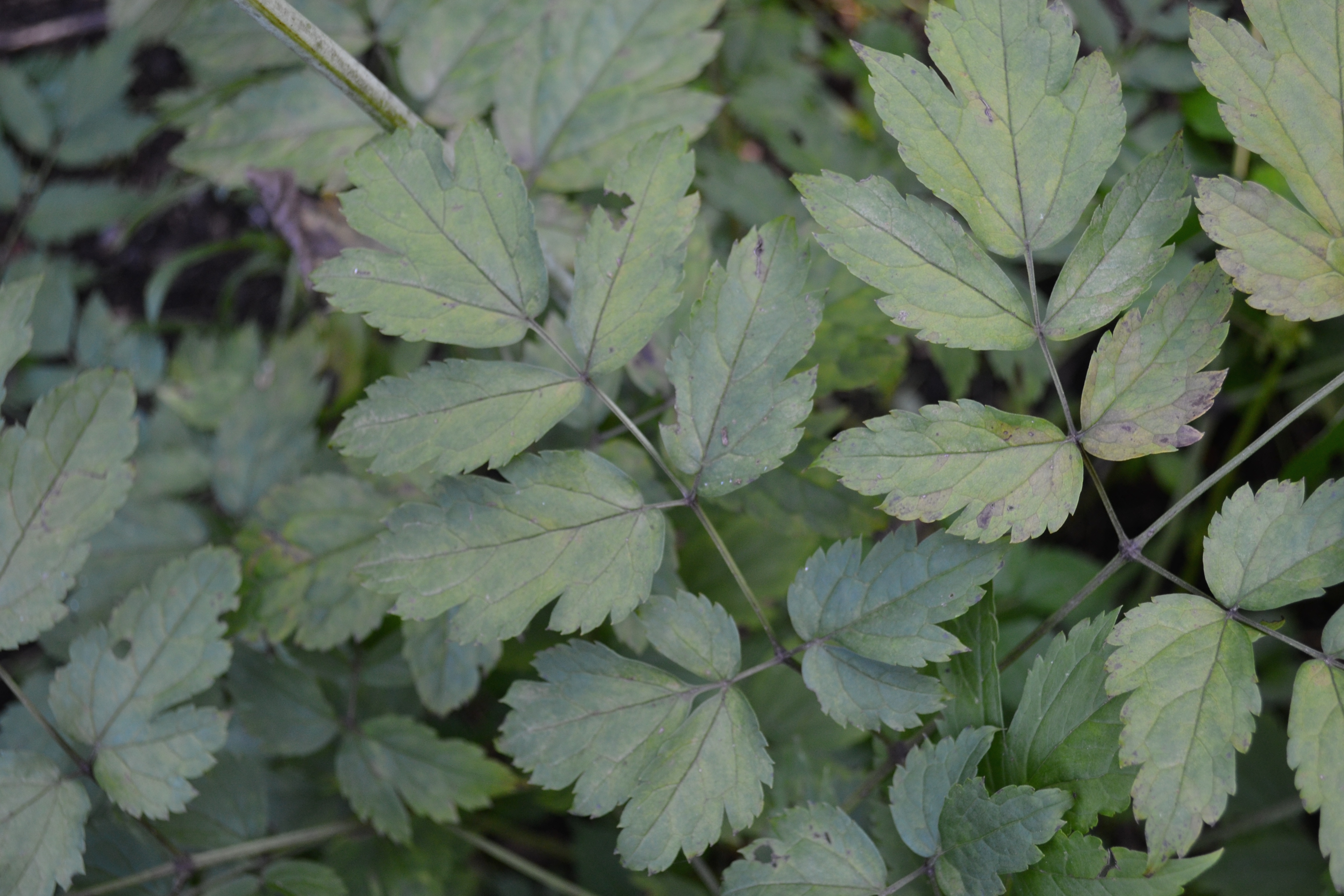
1. Black Cohosh (Actaea racemosa L.)
Black cohosh can be found growing in the deep shade of deciduous forests. It has dark green leaves that are deeply divided with around 3 toothed leaflets on each stem and a black mark on each stem where it forks into three branches (Howell, 2006). The leaf portion of the plant can grow between 2-3 feet tall, and in the summer, the flower stalks emerge, some solitary and some branched, rising 4-7 feet high from the center of the plant (Howell, 2006). Pea-shaped buds form on the upper portions of the flower stalk (inflorescence), and by late July, the white flowers begin to bloom from the bottom of the inflorescence to the top (Howell, 2006).
2. Echinacea (Echinacea spp.)
Echinacea is a perennial that grows up to 4 feet in height with straight, unbranched stems and hairy, alternate leaves (Herbal Academy, n.d.). Echinacea flowers consist of pink-purple petals arranged around a bristle-y cone-shaped seed head (Grieve, 1971). It grows from a slightly spiraled taproot that has a faint aromatic smell and leaves a sweet taste, as well as a tingling, numbing sensation, in the mouth (Grieve, 1971).
3. Wild Yam (Dioscorea villosa)
Wild yam is another perennial vine that grows in deciduous woods and can reach up to 15 feet in length (Howell, 2006). It starts out growing upright with its leaves growing in a whorl; as it continues to grow from the center of the whorl, the leaves become alternate (Illinois Wildflowers, n.d.). Wild yam has heart-shaped leaves with distinctive, parallel veins that run from the base of the leaf to the tip (Howell, 2006). It blooms small green flowers from May to July, and in the fall, it produces small triangular seed capsules (Howell, 2006). Wild yam roots are long, knotted, contorted, and woody with an acrid taste and no odor (Grieve, 1971).
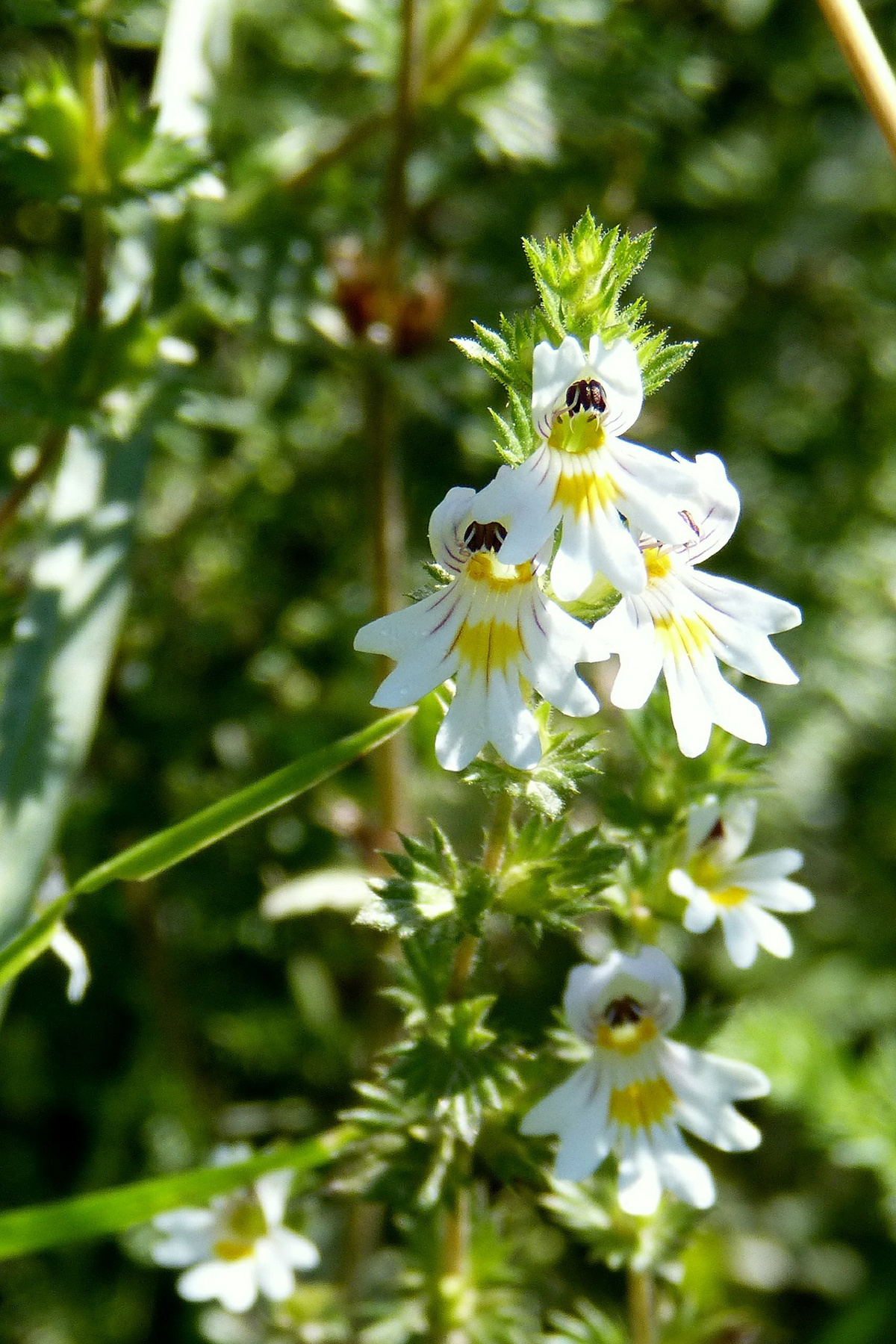
4. Eyebright (Euphrasia spp.)
Eyebright is a small annual plant that grows between 2-8 inches tall with stems that can either be solitary or branched (Grieve, 1971). Leaves are tiny with bristle-toothed edges, and they grow opposite one another on the lower portion of the stem and alternate further up the stem (Foster & Duke, 2000). Flowers bloom from June to September. The upper 2 lobes of the flowers have a pale purple hue with purple veins; these lobes arch over 4 stamens in the center of the flower. The bottom 3 lobes are whiter in color, and they too have purple veins as well as a small yellow spot in the center (Grieve, 1971). The roots of eyebright are semi-parasitic, relying on the roots of other plants, particularly grasses, for part of the plant’s nourishment (Foster & Duke, 2000).
5. American Ginseng (Panax quinquefolius)
American ginseng is a perennial found in the deep shade of hardwood forests, often growing among bloodroot, black cohosh, and wild ginger (Howell, 2006). It grows close to 12 inches tall and has 2-4 leaves on a single stem, with each leaf being divided into five sharply toothed leaflets (Grieve, 1971). The center leaves are larger than the outer leaves. In summer, small green flowers bloom at the center of the plant. Eventually, a small cluster of green berries forms and turns a bright red by fall (Howell, 2006). Ginseng roots are pale yellow to brownish-colored, slow-growing taproots that reach 2-3 inches in length after several years (growing larger the older the plant gets) (Grieve, 1971).
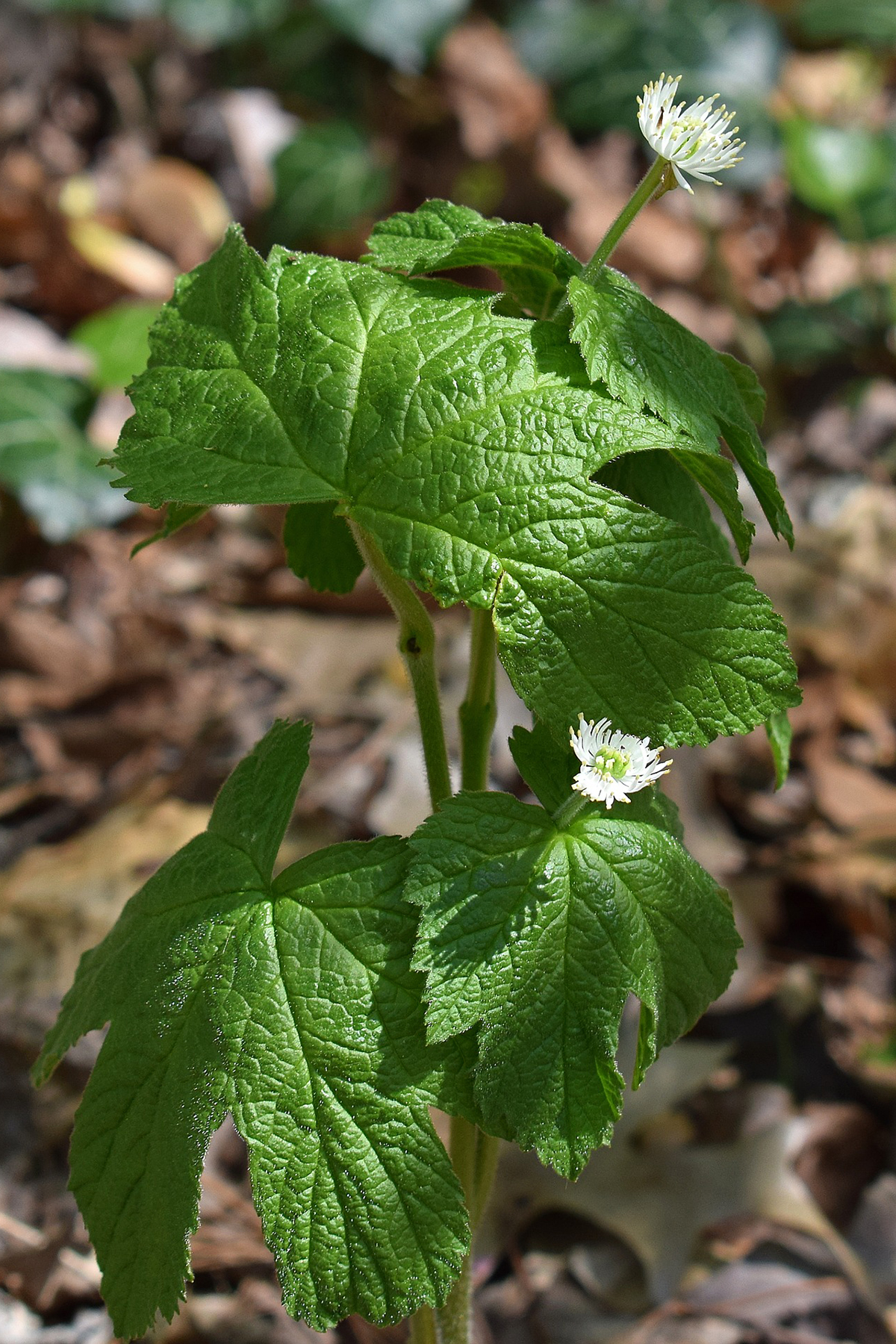
6. Goldenseal (Hydrastis canadensis)
Goldenseal is a woodland perennial that grows anywhere from 6-12 inches tall. It has alternate leaves that grow in pairs on a forked branch with one leaf larger than the other. Leaves are large and double-toothed. There are usually 5 lobes but some can have up to 7 lobes (Foster & Duke, 2000; Sinclair & Catling, 2001). In late April to early May, goldenseal produces a single, white flower consisting of a cluster of greenish-white stamens only (no petals). By July or August, the flower turns into a single, bright red berry that resembles a raspberry. Each berry contains 10-30 seeds (Foster & Duke, 2000; Sinclair & Catling, 2001). Goldenseal roots are about the size of a little finger and consist of a bright yellow rhizome that grows horizontally and has a knotty appearance (Grieve, 1971; Pengelly et al., 2012).
7. Trillium (Trillium spp.)
Trillium grows in shady, wooded areas near bloodroot and trout lily (Erythronium americanum) and has a single erect stem about 12 inches tall with three triangular-oval leaves covered in a net-like pattern of veins which vary in shape and color by species (Howell, 2006). Trillium flowers bloom between April and May and have three ovate, wavy-edged, petals (color varies by species) surrounded by three small green sepals (Missouri Botanical Garden, n.d.a.). There are two whorls of three stamens, three stigmas, and three seeds inside each flower (Howell, 2006). As you can see, trilliums are a living tribute to the number three!
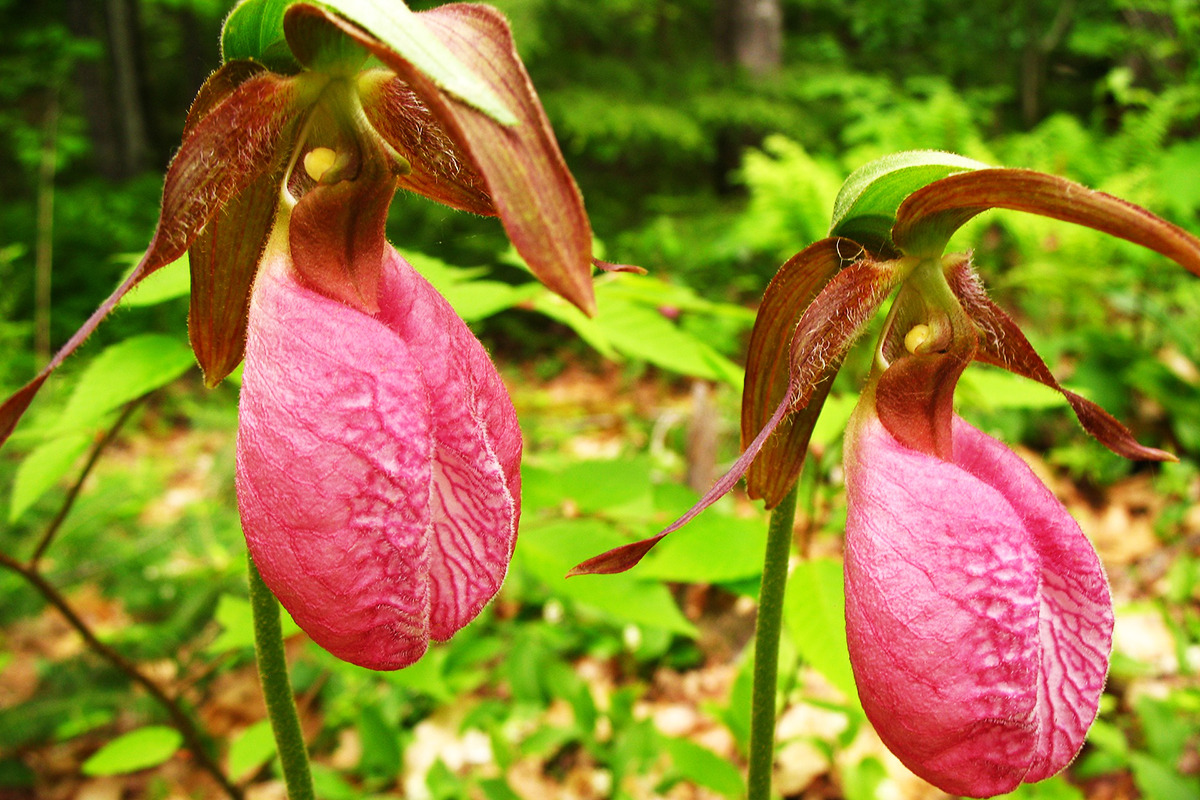
8. Lady’s Slipper Orchid (Cypripedium spp.)
Lady’s Slipper orchid grows in rich woodlands and bogs among conifer and deciduous trees. While there are over 50 species worldwide, most have similar characteristics (USDA Forest Service, n.d.b.). First, lady’s slipper is a perennial that can grow anywhere from 8-36 inches tall. Its leaves are broadly lance-shaped, with 3-6 leaves alternating up the stem with parallel veins running from the base to the tip, and depending on the species, varying degrees of hair can be found on the leaves and stem (Foster & Duke, 2000). Lady’s slipper blooms between May – July (Foster & Duke, 2000), producing its characteristic feature — various sized flowers that are shaped like a slipper, each flower featuring two fertile anthers instead of just one (Britannica.com, n.d.). Most species have 1-2 flowers per stem, and flowers vary in color depending on the species — from white to yellow to pink to burgundy (Foster & Duke, 2000). Most species grow from rhizomes and have fibrous roots (Britannica.com, n.d.).
9. Slippery Elm (Ulmus rubra)
Slippery elm is a medium size tree that usually reaches anywhere from 40-60 feet tall, sometimes up to 100 feet tall, with a broad crown, soft, downy twigs, and small reddish-green flowers in the spring (Missouri Botanical Garden, n.d.b.). Its leaves are about 4-8 inches long and 2-3 inches wide and are rough and dark green on the upper surface with a hairy, lighter green underside (Missouri Botanical Garden, n.d.b.). At maturity, the outer bark is a brown-gray in color, thick, coarse-feeling, and fissured, and the slippery-feeling inner bark has a red color (Kane, 2009).
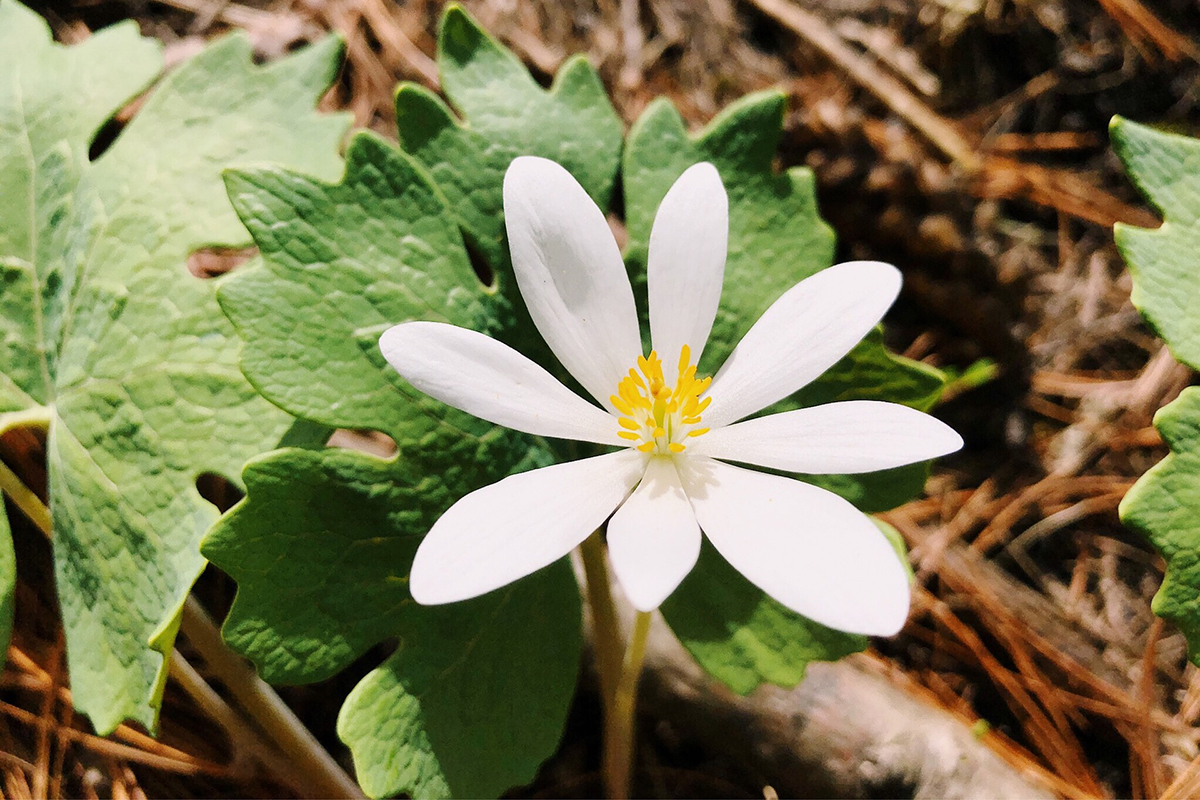
10. Bloodroot (Sanguinaria canadensis)
Bloodroot is one of the earliest plants to bloom in the spring. Its leaves and flower grow on separate stems between 4-6 inches tall, and by late March, the waxy, white flower with yellow stamens at the center can be found blooming just above the leaf mulch of shaded areas with a reddish curled leaf growing alongside it (Howell, 2006). The flower blooms briefly, followed by the unfurling of the plant’s single basal leaf that can be as wide as eight inches (United Plant Savers, 2013). The root is about the size and shape of the little finger. It is thick and fleshy, and it produces a bright red-orange juice (Howell, 2006).
11. Virginia Snakeroot (Aristolochia serpentaria)
Virginia snakeroot is a perennial vine that grows in cool, moist deciduous forests, often around maidenhair fern (Adiantum pedatum), blue cohosh (Caulophyllum thalictroides), and wild geranium (Geranium maculatum) (Howell, 2006). The vine can grow between 1-2 feet long and has heart-shaped leaves and brownish-purple flowers that are S-shaped and bloom between May to July (Howell, 2006). The root is thought to smell like turpentine (Howell, 2006).
12. Ramp Bulbs (Allium tricoccum)
Ramps or wild leeks have a garlic-like aroma and flavor and can be found emerging from rich, moist soil of temperate, hardwood forests between late March and early April (National Agroforestry Center, 2014). Ramps grow from an underground bulb attached to a rhizome (National Agroforestry Center, 2014), producing elliptic, lanceolate-shaped leaves that grow up from the base of the plant (New England Wild Flower Society, n.d.). The plant sends up a scape in mid-May, and quickly after that, the leaves die back as the tree canopy cuts out sunlight from reaching the plant (National Agroforestry Center, 2014). Ramp scapes will bloom into a white to yellow flowers in late June (New England Wild Flower Society, n.d.; National Agroforestry Center, 2014).
Get Involved In Protecting At-Risk Plants
If you’d like to learn more about protecting and preserving at-risk herbs, let me encourage you to check out the United Plant Savers website (UpS). United Plant Savers strives to protect native medicinal plants of the United States and Canada as well as their native habitats in order to make sure there is an abundant and renewable supply of plants for future generations. They offer information on at-risk plants as well as other plants that are in danger of becoming rare over time. You can become a member, contribute toward their mission, and keep up with news and current events surrounding these plants.
Lastly
If you would like to grow your plant identification skills, learn more about wildcrafting ethics and techniques, understand more about how you can do your part to protect at-risk plants, and study the characteristics of 25 common wild plants, the Botany and Wildcrafting course is a great next step to take! Learn more about this course here!

REFERENCES
Britannica.com. (n.d.). Lady’s slipper. [Online Database]. Retrieved from https://www.britannica.com/plant/ladys-slipper
Foster, S., & Duke, J.A. (2000). Peterson field guide to medicinal plants and herbs of eastern and central North America. Boston, New York: Houghton Mifflin Harcourt.
New England Wild Flower Society. (n.d.). Allium tricoccum. [Online Database]. Retrieved from https://gobotany.newenglandwild.org/species/allium/tricoccum/
Grieve, M. (1971). A modern herbal (Vol. 1). New York, NY: Dover Publications.
Herbal Academy. (n.d.). Echinacea monograph. [Online Database]. Retrieved from https://herbarium.theherbalacademy.com/monographs/#/monograph/1010
Howell, P.K. (2006). Medicinal plants of the southern Appalachians. Mountain City, GA: BotanoLogos Books.
Wild yam. (n.d.). [Online Article]. Retrieved from http://www.illinoiswildflowers.info/savanna/plants/wild_yam.html
Kane, C. W. (2009). Herbal medicine: Trends and traditions. Tucson, AZ: Lincoln Town Press
Missouri Botanical Garden. (n.d.a.). Trillium grandiflorum. [Online Database]. Retrieved from http://www.missouribotanicalgarden.org/PlantFinder/PlantFinderDetails.aspx?kempercode=f317
Missouri Botanical Garden. (n.d.b.). Ulmus rubra. [Online Database]. Retrieved from http://www.missouribotanicalgarden.org/PlantFinder/PlantFinderDetails.aspx?kempercode=a926
National Agroforestry Center. (2014). Forest farming ramps. [PDF]. Retrieved from https://www.fs.usda.gov/nac/documents/agroforestrynotes/an47ff08.pdf
Pengelly, A., Bennett, K., Spelman, K., & Tims, M. (2012). Appalachian plant monographs: Goldenseal, Hydrastis canadensis L. Retrieved from http://www.frostburg.edu/fsu/assets/File/ACES/Hydrastis%20canadensis%20for%20ACES%20website.pdf
Sinclair, A. & Catling, P. M. (2001). Cultivating the increasingly popular medicinal plant, goldenseal: Review and update. American Journal of Alternative Agriculture 16 (3): 131-140. doi: 10.1017/S088918930000905X
United Plant Savers. (2013). Bloodroot (Sanguinaria canadensis). [Online Article]. Retrieved from https://www.unitedplantsavers.org/bloodroot-sanguinaria-canadensis
USDA Forest Service. (n.d.a.). Why are some plants rare. [Online Article]. Retrieved from https://www.fs.fed.us/wildflowers/Rare_Plants/whyare.shtml
USDA Forest Service. (n.d.b.). Meet the ladies: The slipper orchids. [Online Article]. Retrieved from https://www.fs.fed.us/wildflowers/beauty/cypripedium/index.shtml

